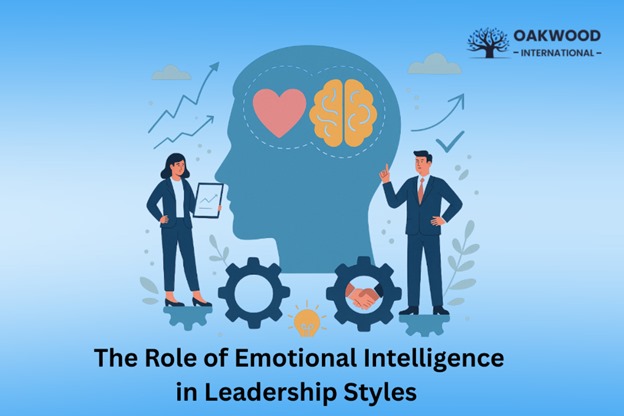Have you noticed how one comment can lift a room while another stalls it? The CMI Level 5 Award in Management and Leadership explains why. It helps you read feelings, shape tone, and steer results. That is Emotional Intelligence. With it, you can adjust your Leadership Styles with calm focus and real care.
In this blog, we share how Emotional Intelligence helps leaders read people, guide change, and build trust. You will learn its key elements, how it shapes Leadership Styles, ways to adapt, and communicate. Also, manage conflict, boost performance, and build trust.
Table of Contents
- What is Emotional Intelligence in Leadership
- Why Emotional Intelligence Shapes Leadership Styles
- Key Areas of Emotional Intelligence in Leadership
- Conclusion
What is Emotional Intelligence in Leadership
Emotional Intelligence is the skill to notice, understand, and manage feelings. Your own feelings and those of others. In Leadership, it guides how you act and how others respond. It helps you hold steady under stress. It also helps you listen, build trust, and move a group forward. Leaders with strong Leadership skills use this every day.
Why it Matters:
- Better choices because emotions do not drive reactions
- Fewer conflicts and smoother teamwork
- Higher morale and stronger performance
Why Emotional Intelligence Shapes Leadership Styles
Different moments need different Leadership Styles. A change project may call for transformational Leadership. A workshop may favour democratic Leadership. A crisis may need firmer control. Emotional Intelligence helps you pick the right tone. It keeps you flexible without losing clarity. When you read the room, you guide action with fairness and pace.
Key Areas of Emotional Intelligence in Leadership
Emotional Intelligence shapes how leaders perform, collaborate and manage their teams. It embraces every part of Leadership. From selecting the right style to managing conflict and building trust. Let us look at the main areas that show their real impact:
Self-Awareness and Authentic Leadership
Leaders with strong self-awareness understand their strengths and weaknesses. They notice what sets off their feelings. This helps them act in a real and honest way. They admit mistakes and choose actions that fit their values. People trust them more, which makes talking openly and teamwork easier. They ask for feedback and reflect often. This keeps growth steady.
Self-Regulation and Adaptive Leadership
When leaders handle their emotions and keep calm under pressure, they set a stable example. They pause before they answer and pick a response that fits the moment. They change their style when needed. This calm and flexible way brings stability and gives teams confidence. They take short breaks to reset. Teams feel safe when leaders stay calm.
Empathy and Transformational Leadership
It helps leaders know how people feel and what they think. They notice when someone is stressed, calm or enthusiastic and offer the right support. This human touch lifts team spirit. It is a key part of transformational Leadership and helps people work toward shared goals. They hold one-to-one meetings and listen fully. Small acts of care build trust.
Social Skills and Collaborative Leadership
Good social capabilities mean clear speech, careful listening and fair handling of conflict. Leaders who build these skills create open and friendly spaces. Ideas can be shared and tested. People work well together, and results improve through joint effort. They set simple rules for meetings. Everyone gets time to speak. They end meetings with clear next steps.
Motivation and Visionary Leadership
Leaders with strong inner drive show hope and energy. Their spirit spreads to others. They link daily tasks to a clear picture of the future. This vision gives meaning to the work. People feel loyal and ready to give their best. They celebrate small wins. They stay consistent even when times are hard. They remove blockers and set clear priorities. This keeps focus high and progress steady.
Conclusion
Strong leaders manage emotions with care and skill. They read the moment and choose the right style without losing trust. If you want practical growth, build daily habits and seek focused learning. Training partners like Oakwood International can guide you with tools and free resources that fit your work. Start small, practise often, and let Emotional Intelligence power your Leadership Styles for lasting results.
